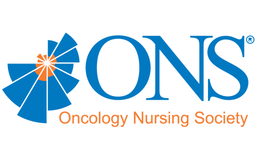
Video Tutorial: https://www.loom.com/share/44cd7351da0346fd93ec43b7306e04e3
Each week, Pam will post questions as ideas. Please comment in each idea to answer the questions that have been posed. We encourage you to reference other panelists' responses to make this more of a conversation. We will notify you when next week's questions are posted.
Create an Account
Click on "Log in / Sign up"
Enter email address and first/last name
-
Check your email to confirm your account and then follow the link in the email to create a password
Note: The email could be in your spam or junk mail folder
IMPORTANT: Make sure to update the name to include your name, otherwise your comments will show up as "Guest"
Navigation
From "Home" to a Specific Idea -> Click on an idea
-
From a Specific Idea to "Home" --> Two options
Click on the ONS logo
Click on the "Home" hyperlink
How To Comment
Click on the idea
Click "Add comment to join the discussion"
Type your comment and attach any files by clicking on the paperclip icon
Click "Post Comment"
Note: We will not be using the voting functionality, so do not worry about that feature.

Response by Sarah Marie Belcher:
As mentioned last week, a theoretical model might help us to guide this work. Social Cognitive Theory is the one that comes first to mind. The NCI’s Theory at a Glance guide (attached) has other models that may be useful too in helping us think about important concepts to consider.
I wanted to call attention to ESPACOMP, an international organization focused on adherence practice & research. They have done work to define adherence, establish theory, guide measurement, etc. and are likely a good place for us to look for previous work: https://www.espacomp.eu/projects/
Here are some initial brainstorming ideas for potential PICO questions:
What multi-level factors (e.g., individual, provider, system, policy) predict levels of oral oncolytic adherence in patients with cancer? - likely to vary by measure and population
How does symptom burden affect oral oncolytic adherence in patients with cancer?
How is oral oncolytic adherence related to health outcomes among patients with cancer?
What behavior change mechanisms are associated with oral oncolytic adherence among patients with cancer?
APS article
What interventions have been successful in improving rates of oral oncolytic adherence among patients with cancer?
Response by Susan Yackzan (CBH)
Patient-focused questions:
What are effective interventions to promote oral chemotherapy adherence in patients with cancer?
What is the best way to assess risk for non-adherence with oral chemotherapy prescriptions?
What are the identified barriers (both patient-related and provider/healthcare-related) to adherence with oral chemotherapy and what are the best interventions for those identified barriers?
How do we best measure adherence and on what schedule?
What is the best practice for oral chemotherapy education?
Process-focused questions:
How does the clinical interdisciplinary team best integrate care for patients taking oral chemotherapy (should pharmacy AND nursing both do chemo education, what is the best way for patients to call in with questions about medications and symptoms, who should make outgoing calls and should the assessments be the same, what is a standard schedule for an apt with the physician)
What is the best practice to integrate the oral chemo patient into cancer programs so that all resources and referral triggers are available just as they are for patients receiving IV chemo or any other therapy (systems exist for IV chemo patients including standard assessments, “triggers’ for referrals to social workers and dietitians and behavioral medicine, etc what about oral chemo patients?)
In patients taking oral oncolytic medications, what is the best way to monitor adherence?
One thing that came up in our meeting was a lack of adherence definition. Consider the following,
In patients taking oral oncolytic medications, what is the rate of adherence needed to effectively treat cancer?